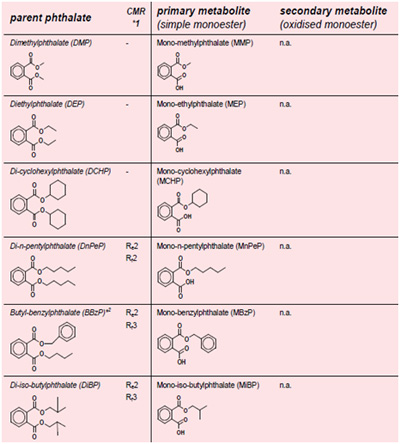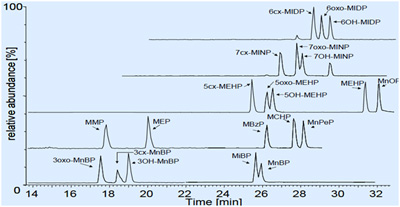In recent days, the plasticizer incident has intensified, which is another major food safety crisis following the melamine incident. From Taiwan, Hong Kong to mainland China, and even the Asia-Pacific and other countries in the world, people have heard the "plastic" change. Moreover, recently, antibiotic powder injections produced by a well-known pharmaceutical factory have also been found to contain plasticizers. After the plasticizer event, Agilent Technologies developed accurate, sensitive, and efficient detection method solutions in the shortest possible time, including high-sensitivity quantitative analysis and accurate qualitative identification in complex food-borne matrices. Figure 1 shows Agilent Technologies' technology platform for plasticizer analysis solutions, including GC, GC-MS, HPLC/UHPLC-MS (QQQ, SQ, and QTOF mass spectrometry), the latest advances in Agilent's high performance liquid chromatography and mass spectrometry (Ultra-high pressure liquid chromatography and high-resolution flight mass spectrometry, etc.) play an important role in plasticizer high sensitivity and high throughput analysis platforms. Plasticizers are very harmful to living organisms: 1. Plasticizers have been proven to interfere with human secretion and lead to the reproductive system. The research team of Taishi University has found that plasticizers can cause genotoxicity and damage human genes. Consumption is the most risky for cardiovascular disease. 2. It also causes great damage to the liver and urinary system, and after being poisoned, it is also passed on to the next generation through genetics. 3. Shen Linhu, assistant professor of life sciences at Taishi University, and Li Shuilong, a professor at the Environmental Medicine Research Center of Kaohsiung Medical University, analyzed the genetic interactions caused by exposure of these plasticizers to cause heart, liver and kidney toxicity after one year. The greatest risk to human disease is cardiovascular disease. 4. The plasticizer DEHP, a phthalate, is a synthetic chemical. According to the data, the plasticizer DEHP will cause harm to the human reproductive system, immune system and digestive system, such as damage to male reproduction. The ability to promote female precocious puberty may result in children's gender disorder, and long-term high intake may also lead to liver cancer. The most commonly added phthalates in plastics are the following six: Sample preparation techniques for plasticizer components in complex matrices are very important. Table 1 lists the extraction solvents and methods commonly used in regulations. Table 1. Common extraction solvents and methods for plasticizers in the regulations. Sample pretreatment of Agilent Technologies refers to the Taiwan FDA method: 1g sample is taken, 45ml MeOH is added for extraction and shaking for 30min, cooled, MeOH is adjusted to 50ml, centrifuged at 3500rpm, and the supernatant is bottled for testing. 1. GC-MS: Figure 2: TIC of infant pacifier extract (A) and The results of the GC-MS analysis are shown in Figure 2. The baby pacifier was pretreated according to the CPSC method with high recovery rates of 97–105% for DMP, DEP, DBP, DHP, BBP, DEHP and DNOP. 2. Fast 5975T LTM GC-MS: Utilizing the Agilent 5975T LTM GCMS instrument system LTM patented technology for rapid temperature rise and fall, Figure 3 shows the spectrum of 17 plasticizers 2ppm mixed SCAN and SIM at 5 times the national standard GB/T 21911-2008. The GC/MS instrument has been greatly improved in the analysis of the speed of 17 plasticizers in food and beverage, and the separation analysis can be completed in less than 6 minutes. With the 5975T, you can perform rapid analysis in a routine laboratory, and you can analyze it from the mobile lab to the sampling site to provide analysis results in a timely manner. 3. LC-SQ analysis of 29 plasticizer components: Figure 4 shows the separation of 29 plasticizer components and their isomers. Experiments show that the established method has high throughput and high sensitivity, and the separation is completed in 6 minutes. 4. LC-QQQ: Agilent uses ultra-high sensitivity analytical tools - fast liquid tandem mass spectrometry for microanalysis. Fast LC tandem mass spectrometry can reduce system background interference and solvent usage, and can simultaneously analyze 13 phthalates: DMP, DEP, DAP, DPP, DBP with simple sample extraction and dilution sample preparation. , BBP, DCP (Dicyclohexyl phthalate), DNHP, DEHP, DEHA, DNOP, DINP and DIDP. The method is fast and accurate, and is the best method for solving high-throughput analysis of large samples. 5. LC-QTOF analysis of plasticizer ingredients in food matrices: High-resolution time-of-flight mass spectrometry (TOF MS) provides high-accuracy mass numbers (<2×10-6) combined with accurate masses of fragment ions provided by quadrupole-time-of-flight tandem mass spectrometry (QTOF MS) Qualitative confirmation of trace components in powerful complex matrices. The target compound was extracted from the TOF total ion chromatogram by an accurate mass window (<2×10-5), and the peak area of ​​the extracted ion stream was used for quantitative analysis. Simultaneously obtaining the second-order mass spectrum through the target M/SMS function of QTOF enables high-sensitivity quantitative analysis and high-selective qualitative analysis in one analysis. Figure 6 shows the separation and detection results of 14 kinds of plasticizers and their isomers by UHPLC 1290-QTOF 6550. The analysis of all components was completed within 10 minutes, and the flux was high. Rapid and accurate qualitative screening of plasticizer components in complex food matrices by MS/MS and standard mapping in the PCDL database (Figure 7); automated use of MSC software for fragment ions in secondary mass spectrometry Analyze the structure and analyze the relationship (Figure 8). Figure 8. MSC software automatically resolves the structure of the secondary mass spectrometry fragment ions and their relationship 6. Analysis of metabolites of plasticizer ingredients in the body: Plasticizers are metabolized in the body to metabolites that are harmful to the organism, so their analysis is very important. Table 2 lists the six regulatoryly controlled plasticizer components and their possible in vivo metabolites. Table 2. Six regulatoryly controlled plasticizer ingredients and their possible in vivo metabolites. Figure 9 shows the results of online SPE-HPLC-QQQ analysis of 22 plasticizer metabolites with high detection sensitivity (LOQ: 0.05~0.5ug/L). The established method is the distribution of plasticizer metabolites in the body and The toxicity assessment laid the foundation for methodology. Cup Coaster,Cup Coaster Healcier,Diatomite Cup Coaster,Cup Coaster Skin Care Dongguan Vanilla Bioengineering Co., Ltd. , https://www.healthecigarette.de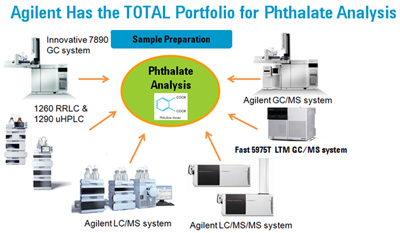
Figure 1. Agilent Technologies Technology Platform for Plasticizer Analysis Solutions Methods Extract Solvent Reference Regulation Soxhlet extraction Chloroform/MeOH ASTM D3421-75 Soxhlet extraction Ethyl Ether EN 14372:2004 Soxhlet extraction DCM GBT 22048-2008 Sonication Chloroform SNT 1779-2006 Sonication Ethyl Methyl Ketone (MEK) GBT 24613-2009 Sonication/Microwave THF CPCS CH-E100-09.3 Microwave EA SNT 2249-2009 Healing Extraction DCM/MeOH Health Canada Method C-34 GC Conditions Column: DB-5ms Ultra inert column, 30 m × 0.25 mm × 0.25 μm, (P / N 122-5532UI ) Inlet Temperature: 290 °C Carrier Gas: Helium at 1 mL/min Injection Mode: Splitless, pulse injection at 35 psi for 0.5 min, splitless injection liner (P/N 5188-3316) Injection Volume: 1 μL Oven Program: 100 °C for 1 min, to 280 °C at 30 oC/min, to 310 °C at 15 °C /min and hold for 4 min MS Conditions Solvent Delay: 5 min MS Temp: 230 oC (Source); 150 oC (Quad) Transfer Line Temp: 280 °C MS: EI, SIM/Scan Scan Mode : Mass range (50-500 amu) Sample: Five calibration solutions at 0.25, 0.5, 1, 2, 5 and 10 μg/mL were prepared by dilution in cyclohexane, along with one calibration blank (cyclohexane). Each standard solution contains 5 μg/mL of benzyl benzoate as internal standard. 
Pacifier extract spiked with 2-ppm phthalate mixture (B) GC condition Column: LTM HP-5MS, 10m, 0.18mm, 0.18um Inlet: 280 °C; no split; splitless liner (P//N 5062-3587) Carrier gas flow: 1.2 mL/min helium Injection volume: 1 μL Column temperature program: 60 ° C (0.2 min), 100 ° C / min, 220 ° C (0.2 min), 25 ° C / min, 280 ° C (0.8 min) Mass spectrometry condition MS temperature: 230 oC (ion source); 150 oC (quadrupole) Scan mode: EI, SIM/Scan Mass range: 50-500 amu 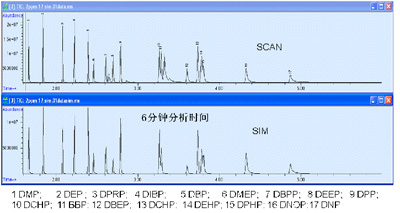
Figure 3. SCAN/SIM pattern of 17 plasticizer components (refer to GB/T 21911-2008) Column: Zorbax Eclipse plus Phenyl-Hexyl (2.1×50mm, 1.8um) Mobile phase: A = water, B = MeOH (A and B are both added to 0.1% formic acid) Flow: 0.5 mL/min; gradient elution (60-100% within 5 min) Column-Oven: 25 °C Injection Volume: 10uL Run Time: 6.0min; Post Time: 1.0min Source: ESI, Positive Dry Gas Temp: 350 ° C Drying Gas FLow: 10.0 L/min Neb Pres: 50 psig VCap (Positive): 4000 V Scan Mode: SIM 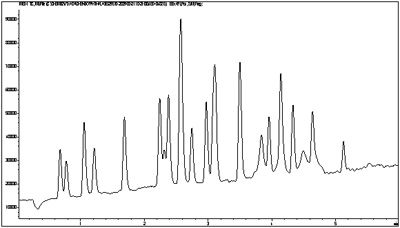
Figure 4. LC-SQ TIC for 29 plasticizer components Column: Zorbax Eclipse-plus C18 (2.1×100mm, 1.8um) Mobile phase: A = ddH2O, B = MeOH (A is added to 5 mM ammonium acetate) Flow: 0.55mL/min Column-Oven: 50 °C Injection Volume: 10uL Run TIme: 10.0min; Post Time: 2.0min A: H2O+5mM ammonium formate ( or ammonium acetate) B: MeOH Min A B Flow (ml/min) 0 10 90 0.2 5 10 90 0.55 6 0 95 0.55 8 0 95 0.55 8.1 0 100 0.55 10 0 100 0.55 Post time=2 min 
Figure 5. Qualitative results for standard products: (20ppb) 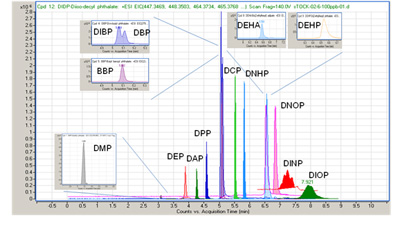
Figure 6. Analysis of 14 plasticizers and their isomers for UHPLC 1290-QTOF 6550 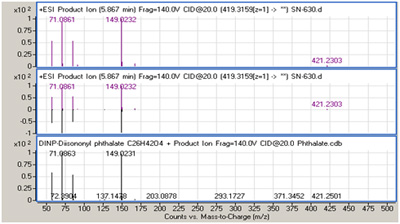
Figure 7. Rapid database screening of unknown plasticizer components in food matrices 
